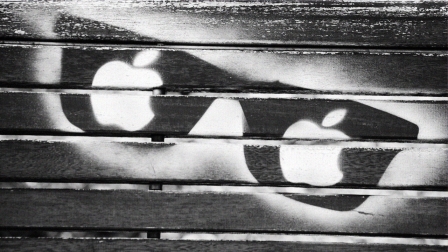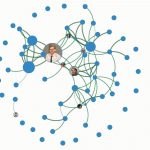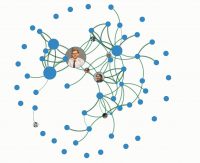Five Surprising, Science-Backed Ways To Boost Your Creativity
You might not think of yourself as especially creative. And maybe—right now—you aren’t. But a growing body of scientific research suggests that anyone has the ability to become at least a little more creative than they already are, sometimes in surprising ways. Here are a few of the stranger approaches to boosting your creativity.
1. Stare At The Apple Logo
Who would’ve thought that you could jumpstart creative thinking just by looking at a picture? Duke University professor Gavan Fitzsimons and a few of his colleagues recently wondered if it could. They were interested in the different effects that exposure to association-laden images might have on people’s ability to think creatively. Specifically, they sought to test whether the logos of Apple or IBM—the former famous for originality and sleek design, the latter better known by contrast (fairly or not) for providing plain beige-box computers.
In one study, participants were asked to look at either the Apple or the IBM logo. They were then asked to generate as many uses as they could think of for a brick. The researchers found that individuals who were exposed to the Apple logo performed significantly better on the idea generation task than did the IBM group.
Now, this is just one correlation from one study, but the researchers attributed the noticeable difference to the difference in popular associations people tend to have between the two tech companies. On balance—and rightly or wrongly—many people think of Apple as a wellspring of innovation, a company that’s different from the norm. Merely seeing the Apple logo can trigger these associations, which may lead in turn to a significant increase in creative thought.
2. Picture Yourself On A Hot Date
When it comes time to mate, male bowerbirds spend much of their time making colorful and elaborate nests. In selecting a mate, a female bowerbird is attracted to the males that have built the most creatively decorated ones.
A group of researchers at the University of Arizona hypothesized a similar link between mating and creativity among humans. In a series of experiments, participants were required to complete several creativity-based tasks. One group launched straight into the tasks while another was asked to imagine themselves on a hot date with a top-quality mate.
Those assigned to the “hot date” group performed significantly better on the creative tasks. Interestingly, the tendency to be more creative after envisioning oneself on a date with someone physically attractive was especially pronounced in male participants. The effect was seen in the women in this group, too, just as long as they imagined a date they also found to be trustworthy and reliable.
The researchers suggested that humans evolved in a way that required them to demonstrate their creativity to attract members of the opposite sex. Throughout history, creativity has been regarded as a sign of a person’s adaptability and problem-solving skills, which in turn suggest an ability to confront—and survive—some of life’s most complex challenges.
3. Move Up Your Gym Time
If you happen to be a morning exerciser, or someone who sweats it out during your lunch break, you may be on to something. David Blanchette and his colleagues at Rhode Island College found that completing just 30 minutes of aerobic exercise increases our ability to solve problems creatively—and that this effect lasts for up to two hours after we’ve finished exercising.
So if you tend to work out after work, you’re probably losing out on that creative boost. If your workday can benefit from more creative thinking, you might be wise to reschedule your exercise regimen for the morning or squeeze it in midday.
4. Warm Up—Without Instructions
Just as you wouldn’t go for a run or lift weights without warming up, research suggests that you shouldn’t try creative problem-solving without first getting into the right frame of mind. So how do you do that?
Research published in the Journal of Marketing Research compared people’s creative problem-solving abilities after playing with LEGOs in different ways. One group had to “kit-build” (that is, build a specific creation) and the other group was able to “free-build.” Those who had to follow instructions and solve a well-defined problem performed significantly worse on a subsequent creative task than those who free-built.
Don’t just make time to warm up before digging into a tough problem—be conscious of how you warm up: Make sure the tasks that precede time spent on creative projects are unstructured (or at least less structured) and free-flowing. Whatever you do, don’t go right from Excel spreadsheets straight to brainstorming.
5. Grab A Sandwich
Ultimately, the success of our creative thinking rests on whether it results in good decisions. And the best time to make these decisions, researchers have found, is when our stomach isn’t running on empty. Our stomachs produce the hormone ghrelin when we’re hungry, and that can lead to more impulsive decision-making.
So before making your next big decision about which ideas to move forward with and which to leave behind, grab a bite to eat first. You’ll be able to think less impulsively—and, ideally, more creatively—about what to do next.
Amantha Imber is the founder of Inventium, an innovation consultancy that only uses tools that have been scientifically proven to work. Her latest book, The Innovation Formula, tackles the topic of how organizations can create a culture where innovation thrives.
related video: Watch T-Pain’s Surprising Advice For Getting Over A Creative Block
Fast Company , Read Full Story
(19)













